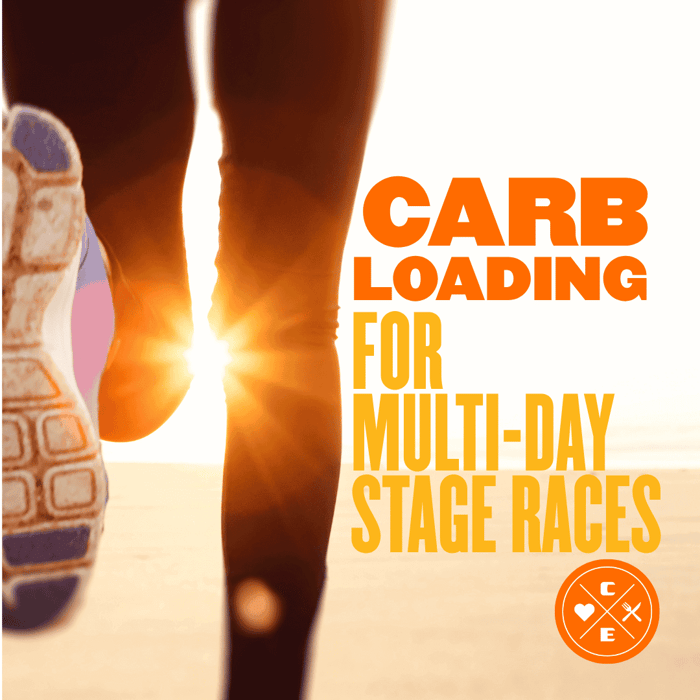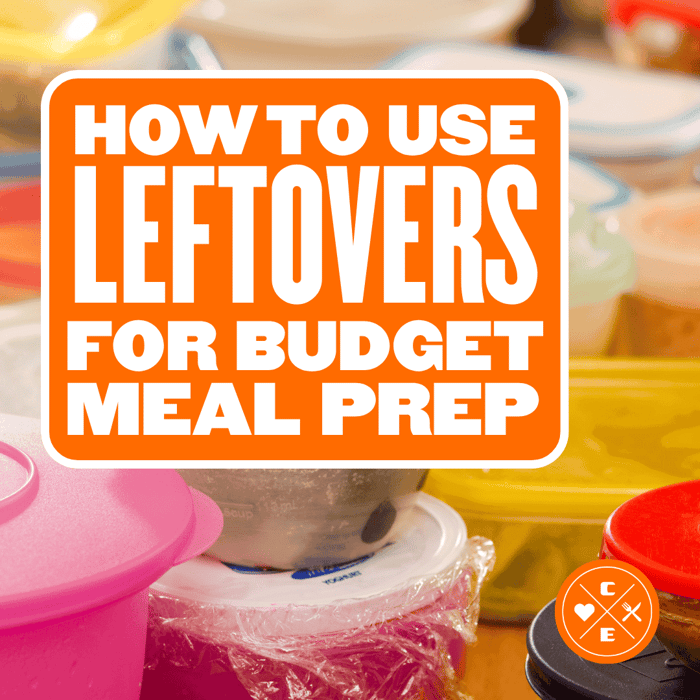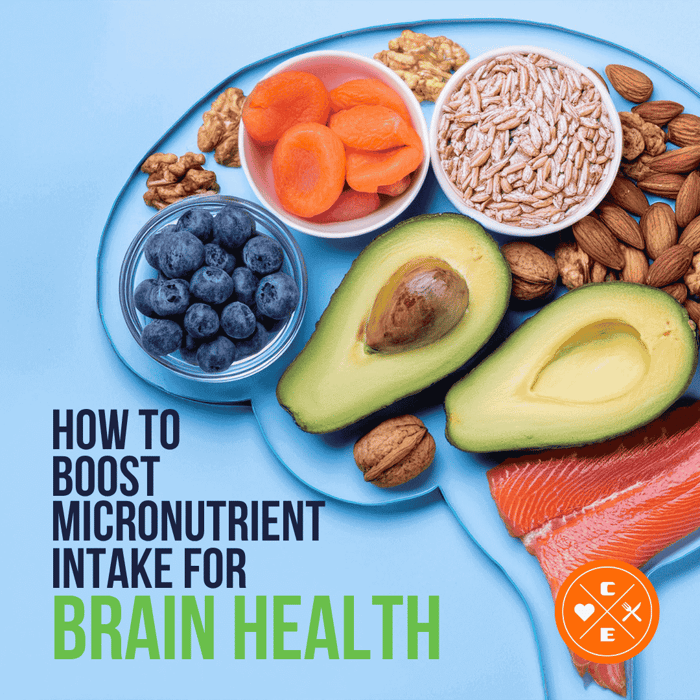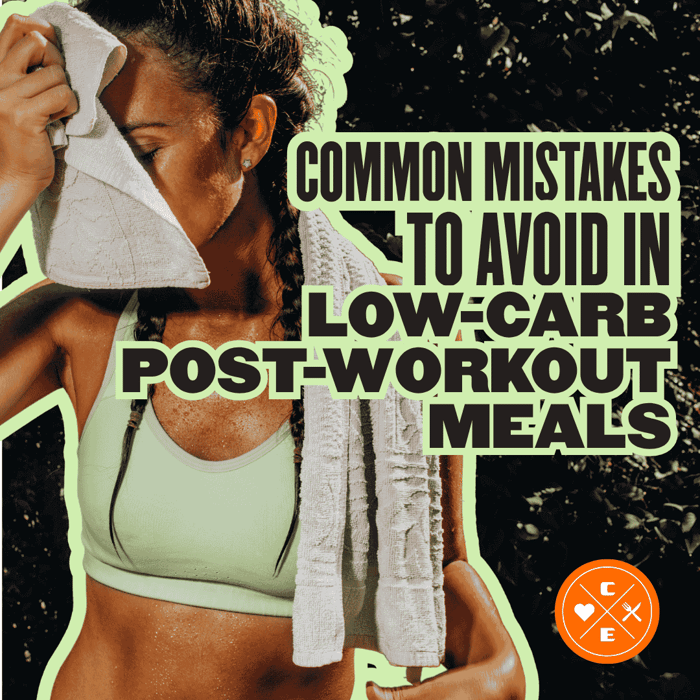Carb Loading for Multi-Day Stage Races

Jason Nista
Nutrition
|
Exercises & Fitness
06/25/2025 9:05am
15 minute read
Table of Contents
Carb loading is a proven strategy to boost energy for endurance events like multi-day stage races. Here's what you need to know:
- What it is: Carb loading maximizes glycogen (your body's fuel) in muscles and the liver by eating high-carb meals before races.
- Why it matters: Glycogen stores are limited and typically last 90–120 minutes during high-intensity activity. Carb loading can increase endurance by up to 20% and improve performance by 2–3%.
- How to do it:
- Timing: Start 2–3 days before the event.
- Carb intake: Consume 8–12 grams of carbs per kilogram of body weight daily.
- Food choices: Focus on low-fiber, easy-to-digest carbs like white rice, pasta, potatoes, and sports drinks. Avoid high-fat and high-fiber foods.
- Hydration: For every gram of glycogen stored, your body retains 3 grams of water - stay hydrated.
- During multi-day races: Refuel immediately after each stage with 1.5 grams of carbs per kilogram of body weight and hydrate consistently.
Quick Tip: Practice your carb-loading strategy during training to avoid surprises on race day.
Want a simple way to manage your meals? Pre-made, portion-controlled options are available to help you focus on your race instead of meal prep.
Carb Loading: How to Properly Fuel for Your Next Event (Ask a Cycling Coach 244)
Key Principles of Carb Loading
Carb loading isn't just about indulging in a big bowl of pasta the night before your race. It’s a carefully planned process designed to maximize your glycogen stores, giving you the energy reserves needed for peak performance. Timing and precision are everything when it comes to getting this right.
When and How Long to Carb Load
To fully saturate your muscles with glycogen, the ideal carb loading window is 2–3 days before your multi-day stage race. This approach allows your body to store glycogen efficiently while reducing the risk of digestive discomfort on race day. For effective glycogen loading, aim for 10–12 grams of carbs per kilogram of body weight over 2 days, or 8 grams per kilogram over 3 days - with the 3-day option often being easier to manage.
In addition to adjusting your diet, taper your training 4–5 days before the event. Light, easy activities, like a relaxed bike ride, can help your body optimize glycogen storage without depleting your reserves . Monica Bearden, a Registered Dietitian and Sports Nutrition Consultant at Houston Methodist, emphasizes the importance of this balance:
"Yes, tapering workouts and increasing carbohydrate intake 1-3 days before a race helps to maximize muscle glycogen, which is the form of energy stored in muscles."
Daily Carbohydrate Targets
Once your carb loading timeline is set, the next step is nailing your daily carbohydrate targets. Aim for 8–10 grams of carbs per kilogram of body weight (around 3.6–4.5 grams per pound) each day. Anita Bean, author of The Complete Guide to Sports Nutrition, breaks it down:
"You should aim to up your carbohydrate intake to 8-10g per kilogram of body weight. So, for a 70kg runner, that amounts to 560-700g of carbohydrate per day."
During this period, carbohydrates should make up 85–95% of your total calorie intake. Keep in mind, a well-trained athlete can store approximately 500 grams of carbohydrates as glycogen. However, glycogen storage also brings along water retention, which could lead to a temporary weight gain of 2–4 pounds. To ease digestion and improve nutrient absorption, spread your carbohydrate intake across smaller, more frequent meals throughout the day.
Meal Planning and Food Selection
Carb loading works best when you choose simple, easy-to-digest carbohydrates and carefully time your meals to avoid digestive discomfort.
Top Carbohydrate Food Sources
Simple carbs are the go-to for carb loading because they’re lower in fiber, making it easier to hit your carb goals without upsetting your stomach. Sports Dietitian and Ultrarunner Renee McGregor highlights why carbs are so essential:
"Carbohydrates are the body's preferred currency for energy... They are easily stored in the body in the form of glycogen in our muscles, liver and brain."
Some of the best carb-loading options include white bread, pasta, white rice, fruit juice, honey, and sports nutrition products. These refined choices are often better than whole grains during this phase since they’re less likely to cause bloating or other digestive issues.
Here’s a quick look at some top carbohydrate-rich foods and their carb content:
| Food | Carb Amount (per serving) |
|---|---|
| White rice (1 cup) | 45g |
| Pasta (2 oz) | 42g |
| Potato (1 medium) | 37g |
| Fruit juice (8 oz) | 37g |
| Banana (1 medium) | 27g |
| Pretzels (1 oz) | 23g |
| Sports drink (12 oz) | 22g |
| Fruit snacks (1 pouch) | 19g |
| Honey (1 Tbsp) | 17g |
| Bread (1 slice) | 15g |
Avoid high-fiber foods like vegetables, whole grains, and beans during carb loading. These can cause gas and bloating, which isn’t ideal when you’re trying to pack in carbs. Performance nutritionist James Collins stresses the importance of comfort:
"Gut comfort should be prioritised before the race...practicing your 'pre-race strategy' during training in the weeks leading up to the race – and resisting the temptation to overeat the day before and especially on the morning of the race."
Keep fat intake low as well, since fat slows digestion and can interfere with carb absorption. Stick with familiar foods that you know your stomach can handle - this isn’t the time to experiment with new recipes or exotic dishes.
Daily Meal Structure Examples
A well-structured meal plan can help you hit your carb targets and maintain steady energy levels. Here’s how a typical day might look:
- Breakfast: Combine 2 cups of white rice (90g), 1 medium banana (27g), and 2 tablespoons of honey (34g) for a total of about 150g of carbs.
- Lunch: Build your meal around pasta or potatoes. For example, 4 ounces of dry white pasta provides 84g of carbs. Add a white bread roll and a sports drink to bring your total to around 120–140g of carbs. Stick to low-fat sauces like marinara.
- Dinner: Try 2 medium baked potatoes (74g), white dinner rolls (30g), and 8 ounces of fruit juice (37g) for approximately 141g of carbs.
Snacks are just as important. Options like pretzels, crackers, fruit snacks, and sports drinks can provide 40–60g of carbs per snack. These meals and snacks will help you meet your daily target of 8–10g of carbs per kilogram of body weight.
If meal prep feels overwhelming, Clean Eatz Kitchen offers chef-prepared, portion-controlled, high-carb meals delivered nationwide.
Timing is key, too. Eating 60–90g of carbs within 15–30 minutes after training can help restore glycogen levels. Pairing carbs with a small amount of protein in a 4:1 ratio is ideal for recovery.
Finally, stay hydrated. For every gram of glycogen stored, your body retains about 3 grams of water. This is normal, so don’t be concerned if you notice a slight weight increase from water retention. Avoid alcohol during this phase, as it can interfere with glycogen restoration.
sbb-itb-1989a25
Multi-Day Race Carb Loading Strategies
When it comes to multi-day races, finishing one stage is just the beginning - each finish line signals the start of recovery and preparation for the next leg. Sports nutritionist Holley Samuel puts it plainly:
"For multi-stage races, make a plan for your nutrition or plan to fail! Start by analyzing race logistics and the environment in which the race is held. Then plan out how much recovery time you'll have between races so you can start to plan out what nutrition you'll need for before, during, and after each leg or race. Make these options realistic and accessible, and make sure you practice them during your training."
Much like your initial carb-loading efforts, a consistent and well-rehearsed nutrition routine is key to maintaining performance across multiple days. What you eat after each stage is just as important as how you fuel before the race.
Refueling Between Race Stages
The time immediately after finishing each stage is your prime opportunity to jumpstart recovery. This is when your muscles are most ready to absorb carbohydrates, and delaying this process can significantly hurt your performance the following day. Research indicates that waiting more than two hours to refuel can reduce glycogen synthesis by 50%.
Within 30 minutes of finishing, aim for 1.5 grams of high-glycemic carbohydrates per kilogram of body weight. For example, a 150-pound athlete should consume about 102 grams of carbs during this window. Think fast-absorbing options like sports drinks, glucose tablets, or recovery shakes to get the job done quickly.
Your refueling strategy should adapt based on how much time you have before the next stage:
- Less than 2–3 hours: Your recovery overlaps with pre-race fueling. Stick to simple carbs and fluids like energy chews, electrolyte tablets, or gels paired with sports drinks. These options are easy to digest and won't weigh you down.
- 2–3 hours: You can include more substantial options. Combine 20–40 grams of protein with 60–90 grams of carbs shortly after finishing. Liquid recovery drinks are a great choice since they're gentle on your stomach after intense effort.
- More than 3 hours: Follow your initial post-race snack with additional meals or snacks every 2–3 hours. This allows you to incorporate more complex carbs, quality protein, and even healthy fats in a balanced meal.
Hydration is another critical piece of the recovery puzzle. Sip water consistently and include electrolytes to replenish what you've lost. The extra water weight from glycogen storage is a good thing - it supports your energy reserves for the next stage.
During the race itself, aim to consume 60–90 grams of carbohydrates per hour. This helps maintain your energy and reduces the recovery workload for your body afterward.
By dialing in your refueling strategy, you can avoid common mistakes that could derail your recovery.
Common Mistakes to Avoid
In multi-day racing, even small nutrition missteps can snowball into major problems. One of the most common errors? Testing your carb-loading strategy for the first time during the race. Just like your legs, your gut needs training to handle these demands.
Here are a few pitfalls to steer clear of:
- High-fiber or high-fat foods: These can lead to digestive discomfort and sluggishness. Stick to low-fiber, easily digestible options.
- Underestimating carb needs: Athletes often shy away from carbs, worried about temporary weight gain from glycogen storage. Aim for around 10 grams of carbs per kilogram of body weight daily during your carb-loading phase.
- Neglecting hydration: Dehydration can build up over consecutive days, and by day three or four, even minor fluid deficits can severely impact performance.
- Using unfamiliar foods: Performance nutritionist James Collins stresses the importance of gut comfort. Stick to foods you've already tested during training to avoid surprises on race day.
The best multi-day racers practice their entire nutrition plan during training. This means back-to-back long sessions with the same foods, timing, and recovery strategies you'll use during the event. Your gut needs to get used to processing large amounts of carbs while under physical stress.
Finally, remember carb loading is most effective for stages lasting longer than 90 minutes. If your stages are shorter, shift your focus to recovery nutrition between stages rather than extensive pre-race carb loading.
For a stress-free approach, Clean Eatz Kitchen offers meal delivery services with portion-controlled options. These meals can simplify your nutrition plan, ensuring you're ready to perform without the added hassle of meal prep during your taper period.
Classic vs. Modern Carb Loading Methods
When it comes to multi-day stage races, picking the right carb-loading strategy can make all the difference in maintaining energy levels across stages. Over the years, carb loading has shifted from a rigid six-day plan introduced in the 1960s to more flexible, athlete-friendly techniques that maximize glycogen stores with less hassle.
The classic method involves two distinct phases: three days of intense workouts paired with a very low-carb diet, followed by three days of reduced exercise combined with a high-carb diet to supercharge glycogen storage. On the other hand, modern methods skip the depletion phase entirely. Instead, athletes consume high amounts of carbohydrates (10–12 grams per kilogram of body weight) for 1–3 days while reducing training intensity. Studies confirm that the depletion phase isn’t necessary - muscle glycogen levels can increase by up to 90% in just 24 hours with a high-carb diet. These updated methods not only simplify the process but also offer physical and mental benefits.
"Almost regardless of race distance, I've generally followed what could be viewed as a 'carb-load' before big events... I would always start to remove most of the fat and fiber from my diet and replace this with more simple carbohydrate with the view that it's less likely to result in GI distress on race day and to slightly increase my overall carb intake."
For athletes with high fitness levels, modern carb-loading methods are especially effective. Research suggests that better physical conditioning enhances glycogen storage without needing a depletion phase. Plus, these methods help athletes maintain steady energy levels and avoid the fatigue and mood swings often associated with the classic approach.
Method Comparison Chart
| Aspect | Classic Method (1960s) | Modern Method (Current) |
|---|---|---|
| Duration | 6 days total | 1–3 days |
| Depletion Phase | 3 days of very low carbs with intense exercise | None required |
| Loading Phase | 3 days of high carbs with reduced exercise | 1–3 days of high carbs (10–12 g/kg body weight) |
| Training Impact | May disrupt training quality | Minimal disruption with reduced volume |
| Side Effects | Fatigue, mood swings, GI issues during depletion phase | Minimal side effects |
| Glycogen Storage | Above-normal levels achieved | Up to 90% increase in 24 hours |
| Performance Gain | Up to 20% capacity increase | 2–3% improvement in events >90 minutes |
| Best For | Athletes with time to follow a strict protocol | Highly trained athletes, especially in multi-day events |
| Complexity | High – requires strict adherence to phases | Low – straightforward and easy to follow |
If you’re new to carb loading, take a gradual approach by slowly increasing carbs in your meals instead of making sudden, drastic changes. For experienced athletes, especially those tackling multi-day events, modern methods are more practical. They help avoid digestive discomfort and allow for faster recovery between stages, ensuring you’re ready to perform at your best.
Conclusion
Carb loading, when done right, can make a significant difference in your performance. It requires careful planning, choosing the right foods, and timing everything just right to maximize glycogen stores.
Start your carb-loading process a few days before your event, while scaling back your training intensity. Opt for carbohydrate-rich foods that are low in fat and fiber to avoid any digestive discomfort on race day. Spread your meals throughout the day and stay hydrated to fully reap the benefits of your increased carb intake.
Make sure to test your carb-loading approach during training sessions. This helps you fine-tune your strategy and avoid any surprises on race day. The last thing you want is to discover that a certain food doesn’t sit well with you when it matters most.
If you’re looking for a convenient way to manage carb loading, Clean Eatz Kitchen offers chef-prepared, customizable meal plans starting at $49.99. Delivered nationwide, their meals take the hassle out of portioning and planning, so you can focus on your training while ensuring your nutrition is spot on during those crucial pre-race days.
FAQs
What’s the best way to manage carbs for consistent energy during a multi-day stage race?
To keep your energy and performance up during a multi-day stage race, start preparing early by carb-loading 3–5 days before the event. Gradually increase your carbohydrate intake to around 3.5–5.5 grams per pound of body weight per day to fully stock up your glycogen reserves.
Once the race begins, aim to take in 30–60 grams of carbohydrates per hour. Stick with easy-to-digest options like energy gels, drinks, or bars to maintain energy and avoid running out of glycogen. Timing is everything - align your carb intake with your activity levels and recovery needs to stay on track.
Feeling overwhelmed by meal prep? Services like Clean Eatz Kitchen can simplify things with healthy, chef-prepared meals delivered straight to your door. Their portion-controlled options can help you meet your nutrition goals, so you can focus on crushing the race.
What are the possible side effects of carb loading, and how can I reduce them during preparation?
Carb loading can sometimes lead to side effects like bloating, constipation, or diarrhea. These issues often stem from eating too many high-fiber foods in a short period. To help avoid this, try gradually increasing your carbohydrate intake over several days instead of doing it all at once. Stick to easily digestible carbs such as white rice, pasta, or potatoes, and steer clear of foods that are overly high in fiber.
Hydration also plays a big role in keeping discomfort at bay. Make sure to drink plenty of water throughout the day, but avoid drinking too much right before meals. With thoughtful meal planning and by paying attention to how your body reacts, you can enjoy the benefits of carb loading without the unnecessary discomfort.
Why should you practice carb loading during training before a multi-day stage race?
Practicing carb loading during training teaches your body to store glycogen more effectively, a key factor in maintaining energy levels across several race days. It also gives you the chance to refine your nutrition plan, helping you understand how your body reacts to a higher carbohydrate intake.
By experimenting with this method during training, you'll minimize unexpected issues on race day, lower the chances of energy slumps, and set yourself up to perform at your peak when it counts the most.
Related Articles
How To Use Leftovers For Budget Meal Prep
18 minute read
How to Boost Micronutrient Intake for Brain Health
16 minute read
Common Mistakes in Low-Carb Post-Workout Meals
20 minute read



